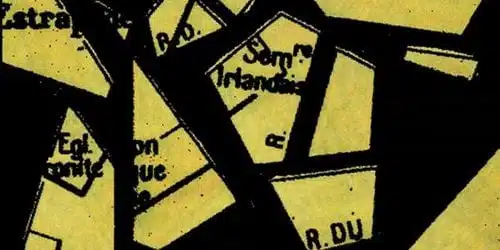
What does it mean to be a revolutionary leftist today? There was a time when it meant either justifying or evading the atrocities of the Soviet Union. “See what your pie-in-the-sky revolution gets you? Dictatorships.” This was the dig from crude Neocons.
Now we have seen Francis Fukuyama proclaim the end of history, only to have it upended by collapses inevitable in a boom and bust economic system like ours. There’s still that tapping at your shoulder, that whisper in your ear that you once knew, when you were young, idealistic, in college — Marx was right and you know it.
But we’ve all grown up now right? We accept some necessary evils in order to realize the safest, most productive, advanced society in the history of mankind. Neoliberalism and free trade can be mitigated and they can’t, nay shouldn’t be obliterated. This is the sensible line of reasoning, right?
And anyway, what would your revolution look like? Bricks through windows? Please, you must be joking.
In his new book, The Spectacle of Disintegration , New School professor McKenzie Wark tries to give some perspective and history to disenchanted leftists. He begins the book by tracing the history that led up to the social upheavals on the left from the French revolution, through modernist movements in art and their expression of new modes of relationships, all the way through Occupy Wall Street. He traces this history, both intellectual and material, in order to describe the Situationist International movement. This intellectual tradition included luminaries like Guy Debord, famous for his work, Society of the Spectacle.
One of the questions Wark asks is, What forms of life are possible? Smart people know we are not really ‘free’, but there seems to be no way out. We accept the path of least resistance, complacency, because anything else seems too overwhelming. Wark disagrees. His answer is attention paid to the mundane and to the noise that permeates our everyday experience. He writes: “A critique of the everyday avoids a pre-emptive fashioning of a comfortable zone for thought detached from what is generally taken to matter to most people.” In other words, for those who seek freedom, look not to grand theories but to the banal, nitty gritty of your everyday experience for the place to wrest power.
The Situationists are distinct from traditional Marxists in that the former believe that alienation has permeated culture so completely that to focus on a purely materialistic revolutionary practice misses all the ways in which you are not free. You do not even think freely because your mind is entrapped by visions of false desire that spur your bad faith.
So Situationists focus on culture. However, Wark writes: “The Situationist move is not to discard inauthentic pop in favor of an authentic popular, rather it is to appropriate the modernist critique of the popular as the basis for a new aesthetic and political project.” While media may be the focus of critique, the point is not to argue taste. Rather, it is to unveil the power of taste in our everyday lives and degrade it’s stranglehold over our political lives.
The spectacle is the image that mediates relations between people. It has taken on different permutations throughout time. The history that Wark meticulously recounts serves to illuminate an important tripartite distinction between what he calls the Concentrated Spectacle, The Diffuse Spectacle and the Integrated Spectacle.
The Concentrated and Diffuse spectacles are best understood in opposition to each other. Under Stalin’s rule, the Soviet Union suffered under a brutal totalitarian regime. Much power was vested through propagandistic techniques that fell under the descriptive curtain of the cult of personality. We see this today in North Korean dictators — an almost religious fealty to the idea of a demigod leader. These men go to great lengths to appear like pop stars in the public eye. They are media whores. This is the Concentrated Spectacle.
The Diffuse Spectacle, on the other hand, is exemplified by the images of advertising that burgeoned and boomed in the second half of the 20th century in the United States. The reds and yellows of McDonalds, the toast of Lucky Strike, all the classic, directly imagistic advertising that is exemplified in Mad Men today. Advertising allowed the meaning of life to be found everywhere, but always through the medium of consumption. People could be whoever they wanted, so long as they bought that identity.
While the Concentrated and Diffuse Spectacle duked it out during the Cold War, the 21st century saw the dawning of a post-ideological Spectacle; one that had integrated itself inconspicuously into everyday life. The Integrated Spectacle is in some sense a combination and a subsumption of the previous two. It’s the integration of the religion of consumption with the power of the state. A prime example of The Integrated Spectacle is the United States’ war on terror.
We live in a time of an everlasting war against a mercurial enemy. Back at home, we are estranged from the realities of violence. Nevertheless, we consume rhetoric, we watch Zero Dark Thirty and we are enthralled by the action, our mouths watering at the prospect of seeing Osama bin Laden killed by Seal Team Six.
The Spectacle of Disintegration is a fascinating read for those unfamiliar with Situationist Theory. It’s probably helpful to familiarize yourself with Debord’s Society of the Spectacle beforehand. The only problem I have with this work is the same one I had reading Foucault in school. A critical examination of power is only that: an examination. Unveiling our shackles does not give us the tools to break them. Perhaps mere philosophy is the best that we’ve got.
